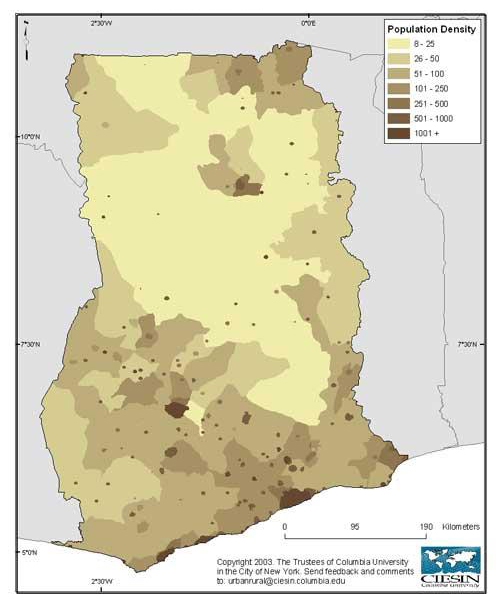dept | resources | glossary | credits | feedback | help | search |
|||||||
 |
|||||||

|
|||||||
 |
|||||||
| The Harriet and Robert Heilbrunn Department of Population and Family Health |
|||||||
 |
|||||||
intro | use demographic stats | rates & indices | measure of the total population | conclusion | exam |
|||||||
Measure of the Total Population Structure and Size
Population RatiosPopulation ratios are used to describe the degree of balance between two elements of the population, e.g., Males vs. females, children versus women of reproductive age. The ratio is normalized to refer to a standard unit of people, usually 100 persons. Sex ratio: The sex ratio is the ratio of males to females in the population (normalized to 100). We calculate two sex-ratios: At birth, and in the total population. The sex ratio at birth is fairly standard, around 105. Due to higher mortality among males, the sex ratio in the total population switches to 95-97. For populations with high levels of sex-selective outmigration (such as male soldiers leaving a country for war), particularly in certain age groups (e.g. aged 15-29), the sex ratio may be even smaller. Ranges for sex ratios:
Dependency ratios- This ratio quantifies the number of persons in a population who are not economically active for every 100 economically active persons in that population. It can be calculated by dividing the population 0-14 years and 65 years and older by the population that is in the 15-64 year age group.
You can calculate separate dependency ratios: child dependency ratio (Pop 0-14 / Pop 15-64) and old age dependency ratio (Pop 65+/Pop 15-64). Ranges for child dependency ratios:
Child-woman ratio- This ratio, the CWR, the ratio of children under 5 per 1000 women of reproductive age. It is usually calculated by dividing the number of children in the age group 0-4 (of both sexes) by the number of women of reproductive age (15-49 years), and then multiplying by 1000.
In the absence of a direct measure of births, this ratio can be used as a rough indicator of fertility levels. In countries with high levels of infant and child mortality, this ratio can be quite biased- as it only accounts for children who survive to 4 years of age. Ranges for the CWR:
Maternal mortality ratio – The maternal mortality ratio(MMR) is the number of maternal deaths per 100,000 live births. The numerator only includes deaths to women during their pregnancy or in the first 6 weeks after delivery. This ratio is often used in lieu of the maternal mortality rate (the number of maternal deaths per 100,000 women aged 15-49 per year) because of the difficulty in obtaining accurate data to calculate the rate of this relatively infrequent event in a population which is subject to great underestimation, since all pregnancies, births and deaths tend to be underreported . Ranges for the MMR:
|
|
||||||
 |
|||||||

